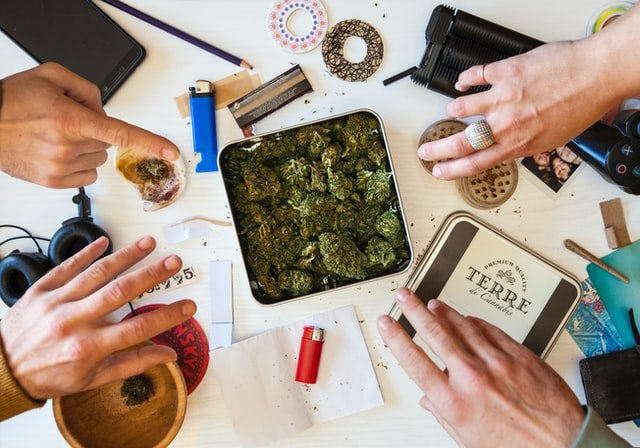Marijuana consumption is not a recent trend. In fact, weed has been around for centuries.
People have been smoking and ingesting pot since before 2500 BC; for both recreational and medicinal use.
Seeing as how smoking is a more traditional method of consuming marijuana, people are looking for newer ways to enjoy the drug.
That’s where dabbing comes in.
Dabbing has become a popular method of inhaling a concentrated burst of vapor to experience an intense high.
A typical dab rig consists of a water-pipe attachment that is heated and the concentrate placed on it, releasing flash-vaporization. The pipe attachment is usually glass or metal, heated either by a butane torch or an electric power supply.
Dabbing is enjoyed widely by people who prefer vapor instead of smoke, and the fact that the concentrate is rather refined.
Types of concentrates
Dabbing makes use of extremely potent cannabis concentrates, which explains why newbies are advised to refrain from trying this method out. The THC potency of dry flower was studied to be between 8%-22%, on average.
Concentrates have a potency that’s twice as much as herb, so that makes them 20%-80% potent. This proves that the type of concentrate you choose will give a different dabbing effect.
Shatter
Shatter, basically, looks like typical jelly does. But, the texture is very brittle. This see-through concentrate is prepared by passing butane through the cannabis sample. The resulting liquid is cooled to create an amber colored solid concentrate.
Wax
Initially, wax too is an amber liquid made by using by using butane. Increasing the temperature makes the liquid into a sticky, ear-wax like substance. The difference in consistency from shatter is due to the different molecular layering in both types of concentrates. They may appear different, but both induce a high that is powerful and long-lasting.
You might be thinking, which is used when? Well, there are a few differences in the usage and storage between wax and shatter.
Wax or Shatter?
Despite the seemingly similar creation process, shatter is trickier to produce than wax. Shatter is also trickier to handle and measure, considering its brittle texture. Now, wax degrades faster than shatter, but it’s known to have more kick to it.
Resin
Unlike shatter or wax, resin is a naturally occurring type of concentrate. Also called ‘sap’, resin is the sticky build up found on female marijuana plants. It acts as the plants natural defense against predators that try to eat it before it’s had a chance to reproduce.
Resin is found on the flower and sugar leaves of a mature plant, and contains the sticky trichomes that have the psychoactive effect users look for.
A very strong concentrate containing most of the plant’s cannabinoids (THC and CBD) and terpenes, resin is also found as a tar-like built up on pipes and bongs after their frequent use; some users scrape it off and add it back to fresh batches to really extract as much THC as possible.
Live Resin vs. Rosin
Live resin is a newer and complicated type of concentrate. It involves the freezing of entire marijuana plants and it’s not exactly everyone’s cup of tea. Cannabis users that focus on the medical use of pot prefer live resin, as it has a better preserved terpene profile and aroma.
Rosin on the other hand is an easy and cheap concentrate to make at home. Cannabis flowers are dried and cured, then pressed using heat and pressure combined, releasing the THC packed resin within.


